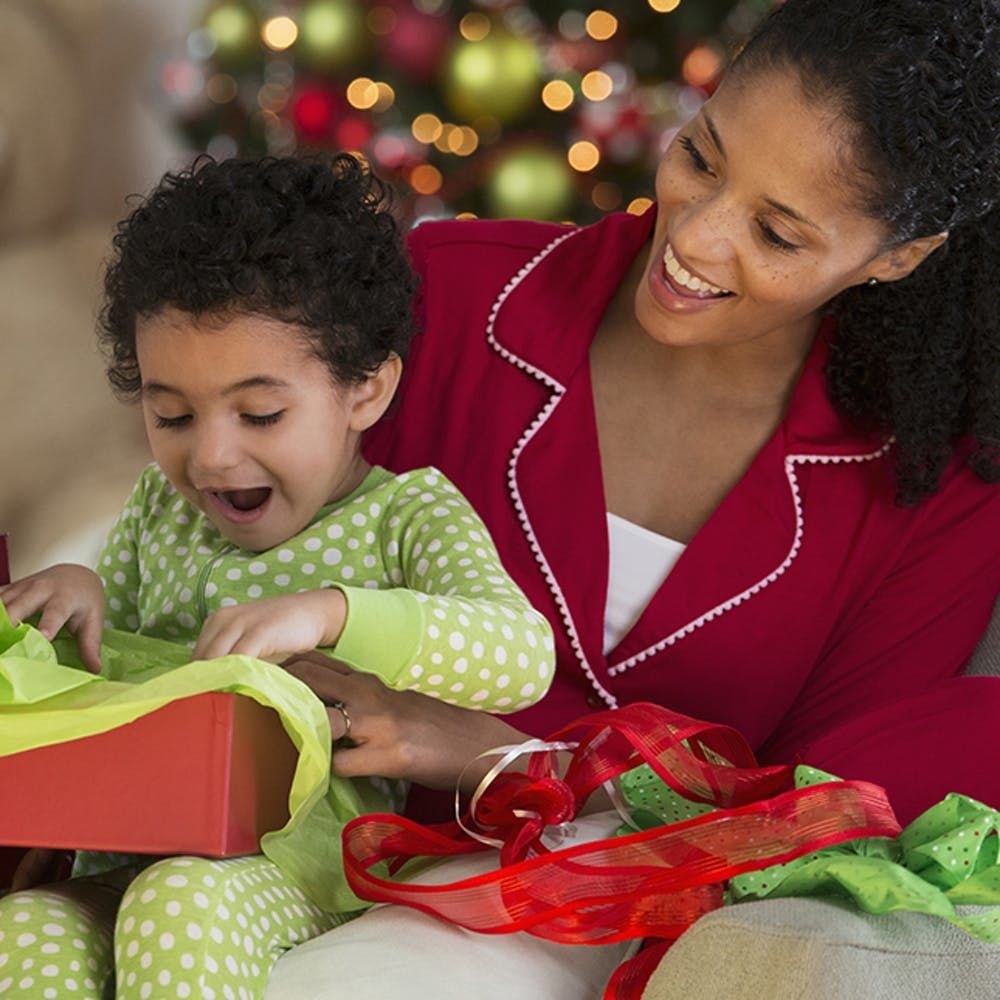‘Tis the season for gifts? Scratch that. ‘Tis the season for gratitude. But for your tot, the concept of thankfulness isn’t exactly easy to understand. (Toddlers are, by nature, egocentric.) But you don’t worry: Your kiddo’s current narcissism doesn’t equal a lifetime of self-centered thinking. You can teach your kiddo about thankfulness — and here’s how.
1. Be patient. Before any lesson, activity, or conversation about gratitude starts, you need to remember that patience is a must. Children aren’t born understanding gratitude, and they won’t necessarily understand such an abstract concept right away. When (and this isn’t an if, it’s a when) your tot forgets to say thank you or refuses to give the baby gift you let them pick out for your BFF’s new little bundle away, let it go. Teaching gratitude is a marathon, not a single sprint.
2. Model gratitude. Watch your own behavior, because your child is. When the opportunity strikes, show your little one just how thankful you are. And this doesn’t mean you have to make any grand gestures. A simple, “Thank you for the help, I appreciate it,” when the bagger at the grocery store lifts something into your cart or anything similar is an act of gratitude that your child can learn from.
3. Get giving. Did Santa bring your kiddo a cavalcade of playthings? With toy boxes about to burst and a living room floor that you can barely see through the LEGOs, blocks, dolls, mini figures, and stuffed animals, now is the time to teach your child gratitude. Ask for help choosing a few playthings to give away to children in need. The act of giving helps your kid to appreciate what they have, and this leads to gratitude.
4. Say thanks. Speaking of appreciation, it’s time to really speak about appreciation. Remind your child to say “thank you” when someone helps them, compliments them, or does something nice for them. Again, your toddler is still fairly egocentric, so the act of giving thanks verbally may take some time — and plenty of prompting.
5. Practice the word. Your tot is building their vocabulary, adding new words that they recognize and say every day. Along with cat, car, shoe, and all the other words you give your kiddo, use a few that focus on gratitude. These can include grateful, appreciation, thank you, thankful, and generosity.
6. Say no. The constant stream of “yes” your child expects isn’t helping them to learn about gratitude. Giving your child everything they want as soon as they want it can lead to entitlement. Saying no once in a while (or more) makes those yeses feel even better! And the warm fuzzy feeling your kiddo will feel can lead to gratitude.
7. Help out. While the volunteer opportunities for a toddler are limited, that doesn’t mean your young child can’t show how grateful they are for what they have by helping others. Look for age-appropriate chances for your child to help. These might mean including your child when you bring soup to a sick neighbor or asking them to help you walk grandma’s dog.
8. Draw it. Even though your toddler isn’t ready to write a full-on thank you note, they can get artsy with their own version. Every time they get a birthday, holiday, or other gift, break out the crayons and construction paper. Your creative kid can draw their very own thank you, showing their gratitude and appreciation!
How do you help your child to show gratitude? Share your tips and tweet us @BritandCo.
(Photo via Getty)
